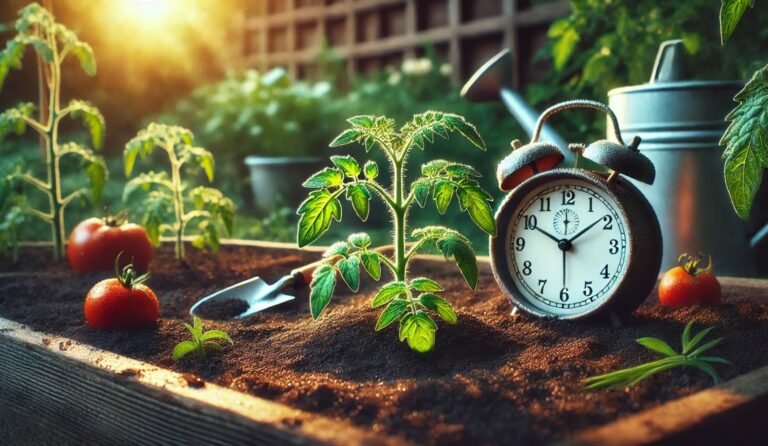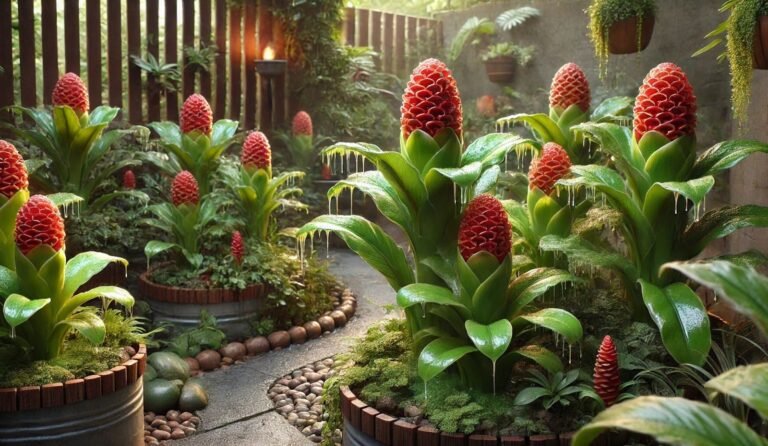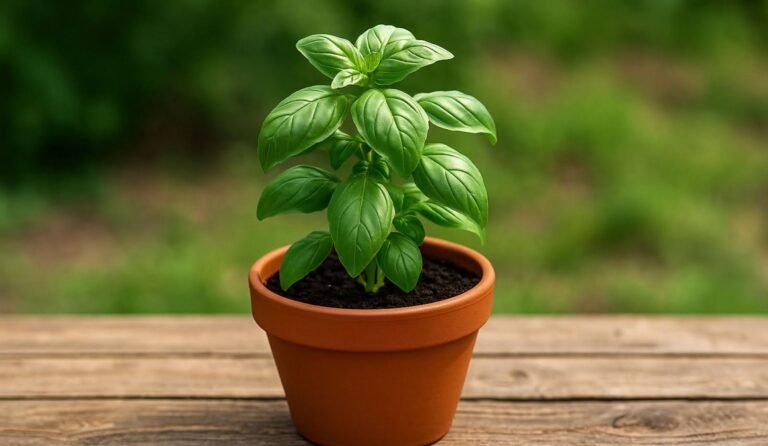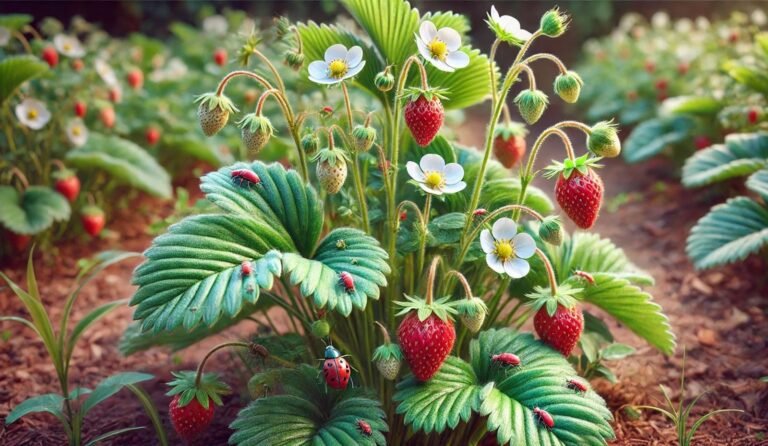Different Types of Pepper Plants: A Guide to Sweet & Spicy Varieties
Different types of pepper plants bring a splash of color, flavor, and heat to any garden. From sweet bell peppers to fiery ghost peppers, there’s a variety for every taste bud. Want something mild and crisp or a pepper that packs a punch? Whether you’re growing them in your backyard or on a windowsill, these plants are surprisingly easy to cultivate. Stick around to discover the best peppers to grow and how to keep them thriving. Let’s turn up the heat on your gardening game!
Understanding Pepper Plants
Pepper plants belong to the Capsicum genus and are native to the Americas. They are typically categorized into sweet peppers, which have little to no heat, hot peppers, which range from mild to extreme spiciness, and ornamental peppers, which are grown primarily for their vibrant colors and decorative appeal.
The heat level in peppers is measured using the Scoville Scale, which determines the concentration of capsaicin, the compound responsible for the spiciness. Bell peppers, for instance, have a Scoville rating of zero, while ghost peppers can reach over a million Scoville Heat Units (SHU).
Different Types of Pepper Plants
Sweet Pepper Plants
Sweet peppers are an excellent choice for those who prefer milder flavors. These peppers are packed with vitamins and antioxidants, making them a healthy addition to meals. Some of the most popular sweet pepper varieties include:
Purple Sweet Pepper Plant – This variety produces deep purple peppers that are mild and slightly sweet. They are perfect for salads and stir-fries and add a pop of color to any dish.
Purple Bell Pepper Plant – A variation of the traditional bell pepper, these purple-hued peppers are crunchy and delicious. They are often used in raw dishes or grilled for a smoky flavor.
Purple Beauty Pepper Plant – Similar to the purple bell pepper, but slightly smaller and more compact, making it ideal for container gardening.
Jimmy Nardello Pepper Plants – These heirloom Italian peppers are long, thin, and red when ripe. They are exceptionally sweet and perfect for frying or eating raw.
Mini Sweet Pepper Plants – A mix of red, yellow, and orange bite-sized peppers that are great for snacking or adding to dishes for a burst of sweetness.
Sweet Banana Pepper Plant – These peppers are long and curved, with a mild tangy taste. They are often pickled or used in sandwiches and salads.
Banana Pepper Plant – Similar to the sweet banana pepper but sometimes has a slight kick when fully ripe.
Hot Pepper Plants
For those who love heat, hot pepper plants are the way to go. These plants produce peppers that vary in spiciness, from mild warmth to extreme heat. Some of the most popular hot pepper varieties include:
Jalapeño Pepper Plant – One of the most widely recognized hot peppers, jalapeños are moderately spicy and commonly used in Mexican cuisine, salsas, and pickled recipes.
Serrano Pepper Plant – Slightly hotter than jalapeños, serranos are great for spicy sauces and salsas.
Cayenne Pepper Plant – Often dried and ground into cayenne powder, this pepper is known for its intense heat and medicinal benefits.
Tabasco Pepper Plant – Famous for being the key ingredient in Tabasco sauce, these peppers are small but pack a punch.
Pequin Pepper Plant – Tiny, round, and incredibly spicy, these peppers are commonly used in Mexican dishes.
Sichuan Pepper Plant – Unlike traditional chili peppers, Sichuan peppers have a numbing effect and are used in Chinese cooking.
Shishito Pepper Plants – These Japanese peppers are mostly mild but occasionally have a spicy kick. They are often grilled and served as appetizers.
Ghost Pepper Plants – One of the hottest peppers in the world, ghost peppers are not for the faint-hearted. They are commonly used in extreme spicy food challenges and hot sauces.
Habanero Pepper Plants – These bright orange or red peppers are fruity yet fiery. They are used in sauces, marinades, and salsas.
Aji Dulce Pepper Plants – These resemble habaneros but have a much milder taste, making them ideal for those who want flavor without too much heat.
Chili Pepper Plants & Chile Pepper Plants – These terms are used broadly to describe a variety of spicy peppers used in different cuisines worldwide.
Ornamental Pepper Plants
Ornamental peppers are not just beautiful but sometimes edible as well. They add vibrant colors to gardens and containers and are easy to grow. Some popular ornamental pepper plants include:
Ornamental Pepper Plants – A broad category of peppers that produce bright, multicolored fruits. While they are often edible, their primary purpose is aesthetic appeal.
Ornamental Pepper Plant – These plants are compact and produce small, colorful peppers in shades of red, yellow, purple, and orange.
Specialty & Unique Pepper Plants
Some pepper plants stand out due to their unique characteristics and growing conditions. These include:
Black Pepper Plants – Unlike chili peppers, black pepper comes from the Piper nigrum vine and is used as a spice.
Mountain Pepper Plant – A rare variety that thrives in cooler climates.
Paprika Pepper Plant – Grown specifically for making ground paprika spice.
Thai hili Pepper Plant – Small but extremely hot, these peppers are a staple in Thai cooking.
Thai Pepper Plant Growing – A guide to cultivating Thai peppers at home.
Purple Pepper Plant – A unique, visually appealing pepper that offers a mild taste.
Growing and Caring for Pepper Plants

Growing peppers at home is easy with the right conditions. Here are some tips to ensure healthy growth:
Sunlight: Most pepper plants require at least 6-8 hours of direct sunlight daily.
Soil: Well-draining, nutrient-rich soil is essential for healthy root development.
Watering: Peppers prefer consistently moist soil but should never be waterlogged.
Fertilizing: A balanced fertilizer helps promote flowering and fruit production.
Pest Control: Keep an eye out for aphids, spider mites, and other pests that can damage the plants.
Harvesting and Using Peppers
Peppers are typically ready to harvest once they reach their mature color. Sweet peppers can be picked at any stage, but they are sweeter when fully ripe. Hot peppers develop more heat the longer they stay on the plant. To harvest, use scissors or pruning shears to avoid damaging the plant. Once harvested, peppers can be used fresh, dried, pickled, or turned into sauces. Freezing and drying are excellent ways to preserve peppers for future use.
FAQ
What are the different types of pepper plants?
There are three main types of pepper plants:
Sweet Peppers: Bell peppers, banana peppers, and mini sweet peppers.
Hot Peppers: Jalapeño, cayenne, habanero, ghost pepper, and more.
Ornamental Peppers: Grown for decorative purposes but sometimes edible.
How much sunlight do pepper plants need?
Pepper plants require 6-8 hours of direct sunlight daily for optimal growth.
What is the best soil for growing peppers?
Peppers grow best in well-draining, nutrient-rich soil with a pH between 6.0 and 6.8. Adding compost or organic matter improves soil quality and boosts plant health.
How often should I water my pepper plants?
Water regularly but not excessively—about 1-2 inches per week. Keep the soil moist but avoid waterlogging, as peppers dislike soggy roots.
Do pepper plants need fertilizer?
Yes, use a balanced fertilizer (10-10-10 or 5-10-10). Apply once every 2-3 weeks to promote flowering and fruit production.
How can I prevent pests and diseases in pepper plants?
Common pests include aphids, spider mites, and caterpillars. Use:
1. Neem oil or insecticidal soap for natural pest control.
2. Proper air circulation to prevent fungal diseases like powdery mildew.
When are peppers ready to harvest?
1. Sweet peppers: When they reach full size and desired color (green, red, yellow, etc.).
2. Hot peppers: The longer they stay on the plant, the spicier they get.
Can I grow pepper plants in containers?
Yes! Use a 5-gallon pot or larger with good drainage. Container peppers thrive in sunny locations like patios or balconies.
Why are my pepper plants not producing fruit?
Possible reasons:
1. Too much nitrogen (leads to leafy growth but no fruit).
2. Lack of pollination (hand-pollinate by shaking flowers or using a brush).
3. Insufficient sunlight (move plants to a sunnier spot).
How do I store harvested peppers?
Fresh: Keep in the fridge for up to 2 weeks.
Dried: Hang in a warm, dry place or use a dehydrator.
Frozen: Slice and freeze for long-term use.
Conclusion
Pepper plants are an exciting and versatile addition to any garden. With different types of pepper plants varieties available, from sweet to fiery and ornamental to exotic, there’s a pepper for every gardener. Whether you’re looking for a mild snack or a super-spicy challenge, growing your own peppers is a rewarding and enjoyable experience.
With proper care, you can enjoy a continuous harvest of these flavorful and colorful fruits throughout the season. So why not start growing your own pepper plants today?







